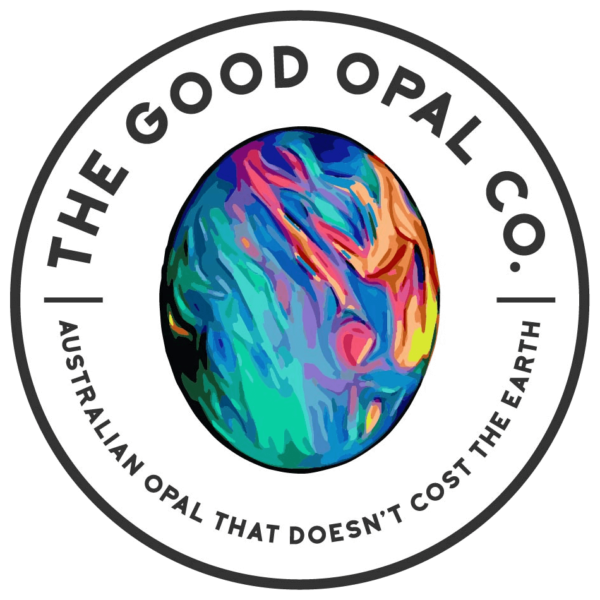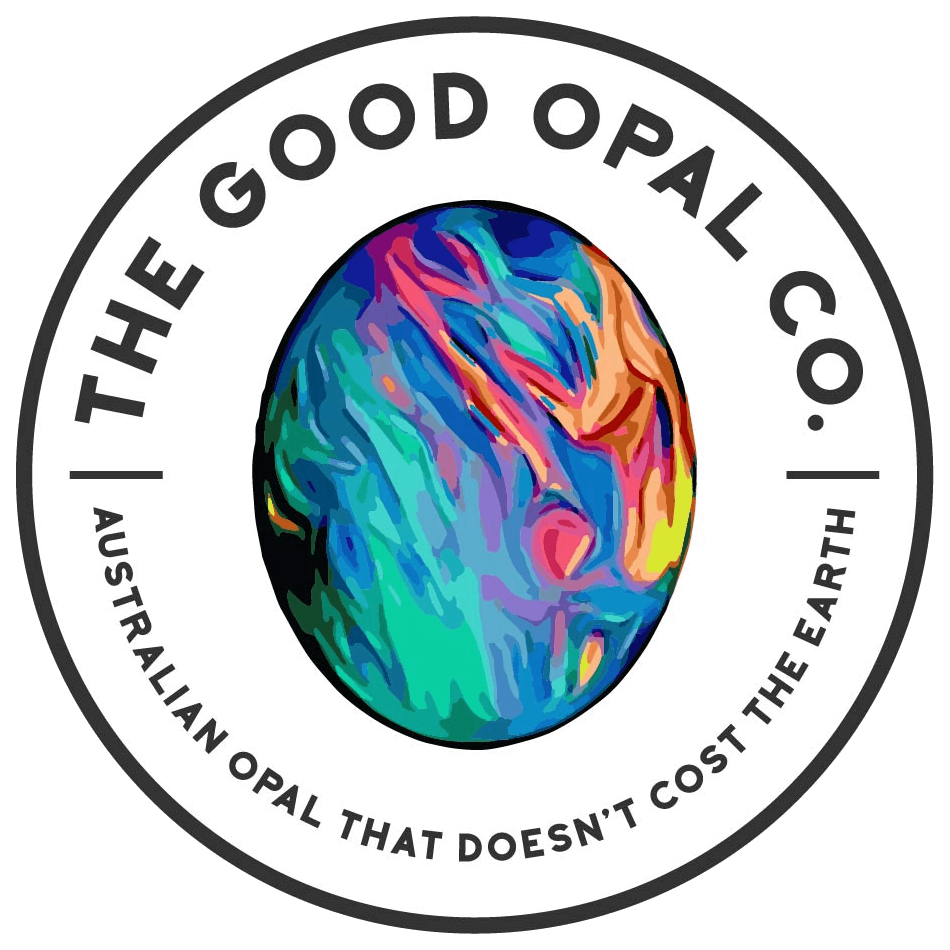So, you want to learn how to value Opal? You’ve come to the right place! Opal is the most difficult of all gemstones to value. Why? Because each opal is a unique one of a kind piece, each pattern and colouring different in its own way, not to mention a number of other factors. Today we’re gonna try to explain the process to provide a better idea of how the experts do it!
Other important factors include the quality of the cut & polish, and the size of the stone. When being valued, opal is carefully examined and is priced ‘per carat’ for the exception of Boulder opal most of the time. It’s also important to remember that Doublets and triplets do not hold the same value as a Solid Opal. Doublets and triplets are an ‘assembled’ stone which only contains a very thin slice of natural opal and are therefore generally much less valuable.
Body Tone
Body tone is one of the most important factors in the valuation of opals. Body tone refers to the background or the ‘underlying colour’ of the opal, which ranges from black through dark to light. As covered in our about Opal Page : https://www.goodopalco.com/white-opal/ the darker an opal the more valuable, (that’s why Black Opal and Boulder opal are highly regarded) because a stone with a darker body tone tends to display colours more vibrantly.

Black opal is the most valued opal and can reach prices of up to AUD $40000 per gram.
By this same logic, an Opal bearing N1 darkness is much more valuable than an opal bearing N9. However, its value its dependant on the other factors. An opal can have N1 darkness and very little colour or brightness. If an N9 opal (which would be a white opal) has gorgeous colouring and brightness it will beat the N1’s value 10 fold.
The Body tone guide (sourced from https://www.opal.asn.au/) was Black opals are generally the most valuable and have a body tone of N1 to N4.
- Opals with N5 to N6 considered a semi black or dark opal.
- Body tone N7 to N9 are called crystal opals.

The Opal brightness guide was produced by the Australian opal association along with the body tone guide. There are 7 sub Brightness ratings with B1 the brightest to B7 the dullest. The brighter the Opal, the more expensive its value will be.

Play of Colour
The “play-of-colour” is the range colours displayed in the opal and how those colours display. The most common colour in opal is purple or blue and the rarest colour is Red (fire), and this is more so for its presence in black opal as it occurs more commonly in its less valuable cousin, the white opal. Red colouring is caused by larger microscopic silica spheres, whereas blue is caused by the more common small spheres and that is why its occurrence is so much rarer.
Direction of Colour
Opals are a gemstone that dramatically change appearance based on what angle the Opal is viewed at. When an Opal is at its brightest, this is called ‘facing’. The direction of colour can affect the price because it will determine how versatile the Opal is. If it only faces in one direction, it may only be suitable for a Pendant for example.
- Opals that face with strong fire from all directions make good ring stones. These Opals are very versatile and are more valuable than one directional opal. A fine quality Opal will look good no matter what direction it is viewed at.
- An opal that faces in one direction is ideal to make into a pendant. The jeweller will set it in the right direction to show as much of the fire as possible.
- Some multi-colour opals might have 1 or 2 strong colours that have different directional faces, and these can be hard for jeweller to set.
- Dead spots are when no colour is visible from a certain angle. These will lower the overall value of the Opal.
Brilliance
Brilliance refers to the brightness and clarity of the colours displayed by opal when the stone is viewed face-up. This ranges from brilliant , bright , to subdued or dull. The brilliance of an opal is also affected by its direction. If an opal has beautiful colours and brightness but doesn’t face you when you observe it front on, this effects the value. The most valuable opals are the ones you don’t have to try and find the colour in; they should shine beautifully regardless of the direction.
Pattern
The pattern- how segments of opal colour form together to create the gorgeous display that is opal, is unique to every individual opal. The distinctiveness and colour displayed by these segments determines the quality of the pattern of an opal. An opals pattern has a massive impact on its value. Some opal patterns are common and don’t add much value whereas rare patterns send it through the roof.
Excellent patterns include ( but are not limited to:
- Harlequin, large sections of colour in which each colour segment is roughly the same size and shape, like a mosaic or chequerboard. A true harlequin pattern is extremely rare and highly sought after.
- Flagstone, large sections of colour with straight edges, in a random pattern
- Ribbon, narrow, parallel cascading lines of rolling colour
- Straw, random thin strips of overlapping colour
- Script pattern (formally known as Chinese Writing), thin strips of overlapping colour which resemble Chinese characters or deliberate drawings.
- Picture stones, the intriguingly unique patterns of ‘novelty’ or ‘picture’ stones, which resemble an object, landscape, animal, person, etc.
- Floral – a random pattern of colour with good spread
- Rolling Flash – large sections of colour which roll across the stone as it turns.
- Broad Flash – large sections of colour which flash as the stone turns.
- Pinfire – tiny points or specks of colour
- Cat’s eye pattern-a complete rolling flash of a single colour with layers of colour beneath
- Moss/Grass.
The Harlequin pattern is the rarest and most loved pattern in opals, but it is very rare. A True harlequin pattern is a mosaic broad pattern, angular close set of colours. Floral patterns are sometimes called floral harlequin.
Some top patterns are Mackerel, Block, Broad flash, rolling flash, Pinfire, Rainbow and most sought out Ethiopian opal is the Honeycomb pattern. Opals that have no, or only slight pattern are generally less valuable.
Colour Bar
The thickness of the colour bar in opal is relative to the overall size and shape of the individual stone. Boulder opal typically has a very thin colour bar due to the way the opal is formed. This should be taken into account when valuing the stone, however, makes little difference to its appearance once set in jewellery. This is a factor which is generally considered against carat weight. The Density and intensity of colour is also important to determine the price. The thickness of the colour bar can help to amplify the brilliance of the Opal colour. Seam Opal generally has a thinner colour bar than opals formed in a knobby.
Inclusions
Inclusions are natural faults in the opal that detract from the value of a finished stone. These include:
- Cracks
- Crazing, i.e., fractures that look like cracks but usually do not dramatically affect the value of stones compared to cracks.
- Sand and other minerals can be found as inclusions in and/or under the colour bar, and in the potch of opals.
- Potch lines or spots present in the face-disrupting the colour.
- (boulder opal) iron stone on the surface of the opal
Inclusions and potch lines and are not to be confused with cracks. A crack line reflects light and greatly devalues an Opal. A potch line has no light reflection, and these opals are generally valued lower but can make artistic picture patterns.
- Some Opals will have a vegetation pattern from the inclusions, and this is popular as the opal has replaced some of the tree or vegetation. Sand or windows also reduce the value of the opal. A window is a gap on the bottom where potch has not formed, and opal is transparent.
All the above factors are considered when valuing opal, however there is no substitute for experience. Truth be known, there is no standardised or set method for valuing opals, as each opal is extremely unique in terms of pattern, brightness, and colouring.
Shape
Oval cut opals are generally considered more valuable than free form, except with boulder opals where free form is considered desirable. The shape of the Opal once again determines how versatile it is. Oval stones generally have the best face of colour and can be used in a variety of applications.
Opal is almost always cut in a cabochon. A cabochon stone is more valuable when it has a high dome compared to a flat stone. This is since cabochons make ideal ring stones, but flat stones are less desirable because they cannot be used in many jewellery designs.
Opal Field Origin
Disclosure of an opal’s source is not only important for ethical reasons but also effects the value of a stone. For example, the opal fields of Lambina and Mintabie are now closed, making opal from these regions highly prized and rare. Mintabie in particular was once a source of black opal, now Lightning ridge is the only place in the world where natural black opal can be sourced. Lightning ridge opal is highly renowned and considered more valuable because it comes with the reputation of being the black opal capital of the world. Arguably and in my opinion, some of the best material (easiest to work with and greatest colours) comes out of lightning ridge.
Value Opal-Natural or Treated
Natural Opal is always valued higher compared to treated Opal. Over the last few years smoked or treated Ethiopian crystal opal has been sold as natural Black Opal. This treatment is not permanent. The only type of Australian opal that can be treated is Andamooka matrix opal; this is opal that doesn’t bare an opal layer that is separate to the host rock but is instead a part of the host rock and is often treated in acid or sugar to darken the host rock to highlight the colours present.

